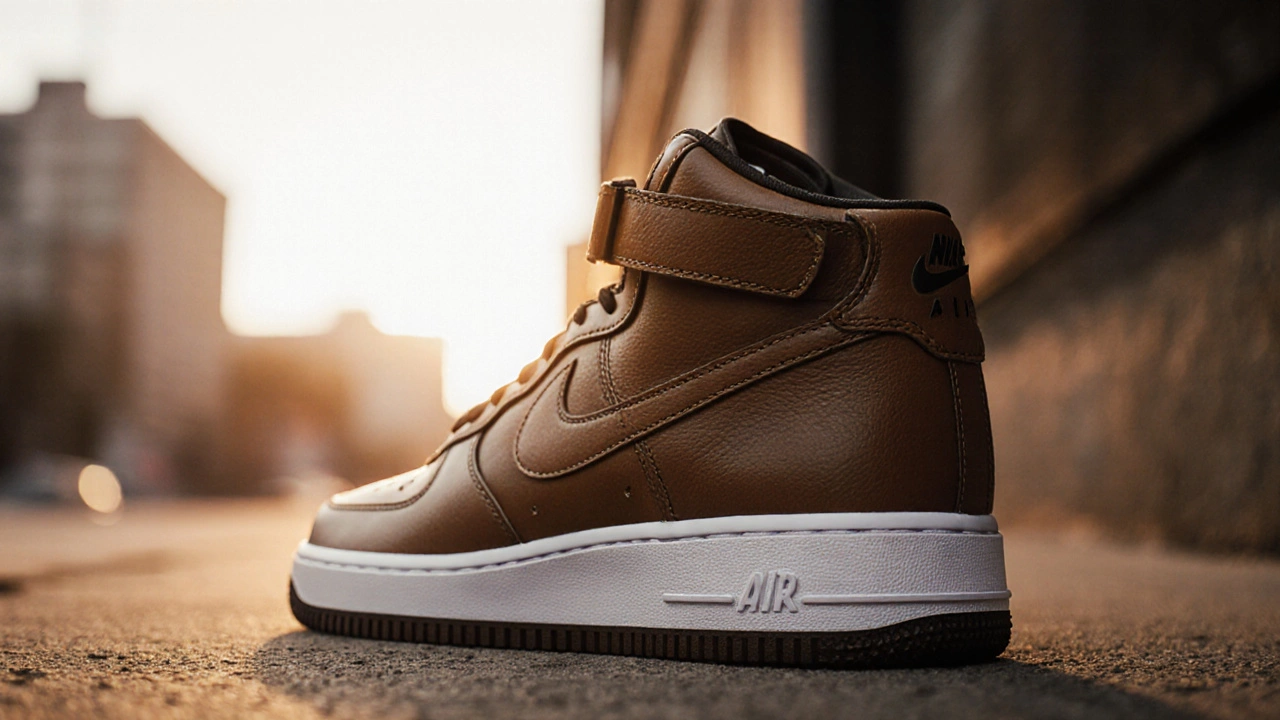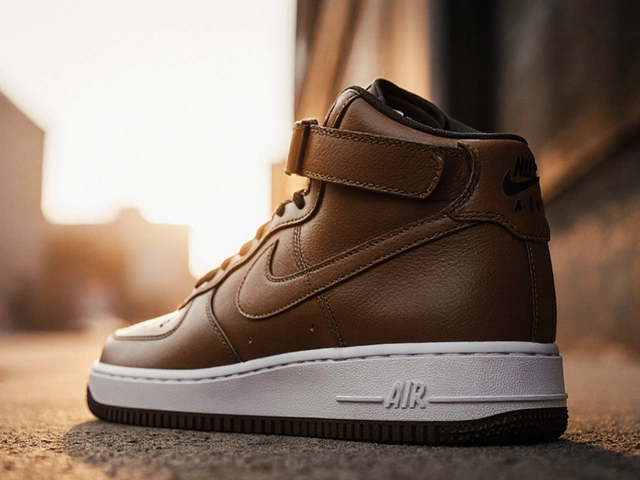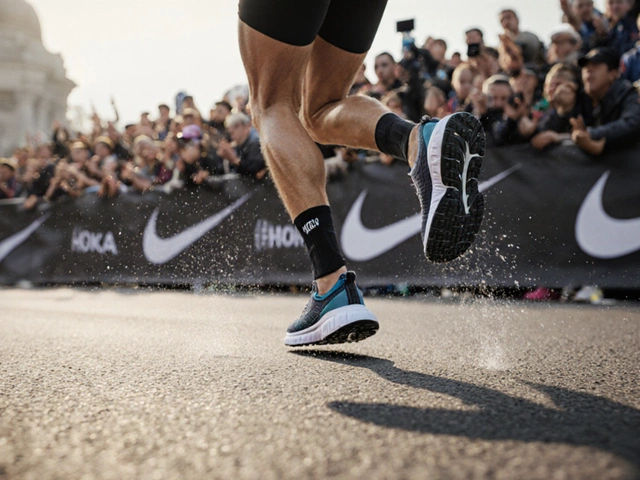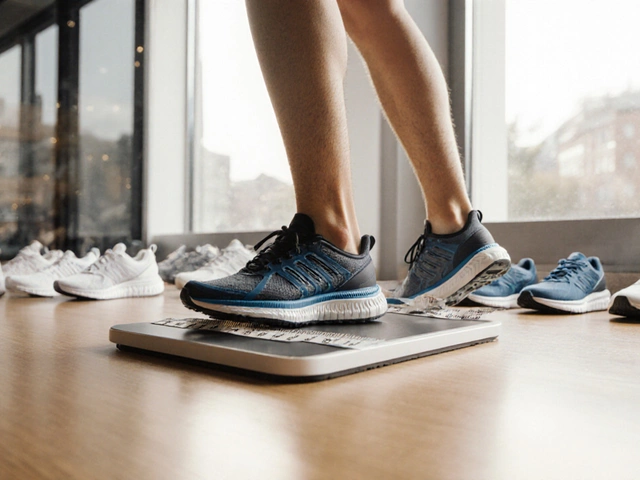Air Force 1 vs. Running Shoe Comparison Tool
- Weight 340 g
- Heel-to-Toe Drop 12 mm
- Cushioning Solid foam
- Outsole Thick rubber
- Breathability Low
- Weight 260 g
- Heel-to-Toe Drop 10 mm
- Cushioning Zoom Air + React
- Outsole Flat rubber
- Breathability High
| Feature | Air Force 1 | Road Running Shoe |
|---|---|---|
| Weight | 340 g | 260 g |
| Heel-to-Toe Drop | 12 mm | 10 mm |
| Cushioning Type | Solid foam, low energy return | Zoom Air + React foam, high return |
| Outsole Grip | Deep rubber tread, street-oriented | Flat rubber, road-optimized |
| Breathability | Leather – low | Engineered mesh – high |
| Support | High-top collar, ankle stability | Mid-cut, dynamic support |
- Short, low-intensity runs – a 1-km warm-up before a training session.
- Urban sprint drills – short bursts of speed where shoe weight isn't a major factor.
- Travel situations – when you have limited luggage space and need a versatile shoe.
For these cases, consider:
- Swapping the stock insole for a cushioned orthotic designed for high-impact activities.
- Loosening the high-top lacing a bit to increase ankle mobility.
- Using a quick-dry, breathable sock to reduce foot sweat.
- Plantar fasciitis – caused by insufficient arch cushioning.
- Shin splints – result of a stiff midsole and high heel drop.
- Knee pain – from reduced shock absorption.
These issues are more likely when you log >5 km per session or run more than three times a week in the same pair.
When you slip on a fresh pair of Nike Air Force 1, the classic high‑top sneaker that’s been a street‑style staple since 1982, you instantly feel the timeless tread and thick leather uppers. But the real question for many runners is whether that iconic silhouette can double as a reliable Air Force 1 running shoe.
Quick Takeaways
- Air Force 1 offers great style but lacks the lightweight cushioning of dedicated running shoes.
- Its bulky sole and low‑drop design can increase injury risk during long runs.
- If you’re in a pinch for a short jog, the shoe can work with some modifications.
- For regular training, choose a shoe built for the specific run type (road, trail, sprint).
- Pair Air Force 1 with proper orthotics or a supportive insole if you must run in them.
What Makes a Shoe a Running Shoe?
Before we judge the Air Force 1, let’s break down the core attributes of a good running shoe. The following entities are the building blocks of performance:
- Cushioning - shock absorption to protect joints.
- Heel‑to‑toe drop - the height difference between heel and forefoot, influencing footstrike.
- Weight - lighter shoes reduce fatigue.
- Stability - controls excessive pronation.
- Flexibility - lets the foot roll naturally.
Manufacturers blend these traits differently depending on the runner’s needs. For example, Nike ZoomX uses a carbon‑fiber plate for a propulsive feel, while Asics Gel focuses on plush gel pods for cushioning.
Air Force 1: Design Overview
The Air Force 1 was originally engineered as a basketball shoe. Its key specs include:
- Midsole: solid foam with a Heel‑to‑toe drop of 12mm.
- Outsole: thick rubber with deep tread for durability.
- Upper: full‑grain leather or suede, offering excellent support but limited breathability.
- Weight: roughly 340g (men’s size 9), considerably heavier than most road runners.
These characteristics make the shoe great for everyday wear, but they clash with the performance priorities listed earlier.
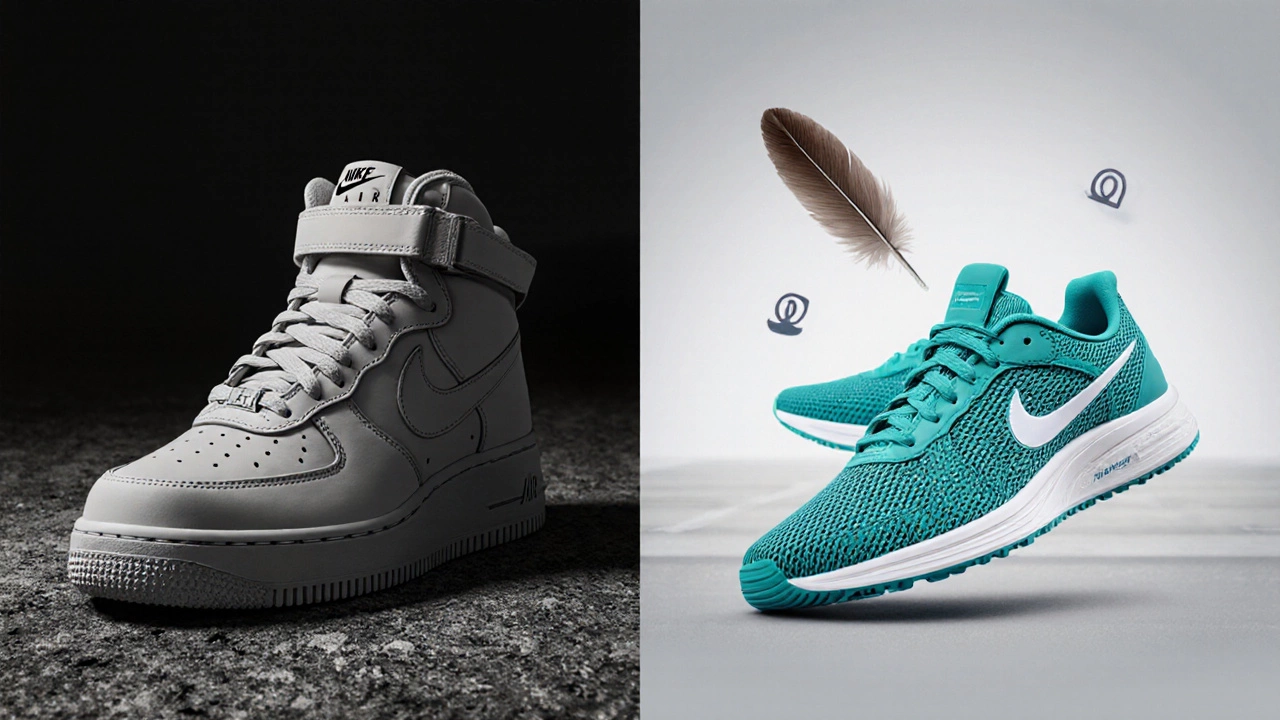
How Air Force 1 Stacks Up Against a Modern Running Shoe
| Feature | Air Force 1 | Road Running Shoe (e.g., Nike Pegasus) |
|---|---|---|
| Weight | 340g | 260g |
| Heel‑to‑Toe Drop | 12mm | 10mm |
| Cushioning Type | Solid foam, low energy return | Zoom Air + React foam, high return |
| Outsole Grip | Deep rubber tread, street‑oriented | Flat rubber, road‑optimized |
| Breathability | Leather - low | Engineered mesh - high |
| Support | High‑top collar, ankle stability | Mid‑cut, dynamic support |
Notice the gaps: the Air Force 1 is heavier, has a larger drop, and uses a denser foam that doesn’t rebound as efficiently. Those differences translate into a less comfortable stride over longer distances.
When Running in Air Force 1 Might Be Acceptable
Even with the drawbacks, there are real‑world scenarios where you might end up jogging in your Air Force 1s:
- Short, low‑intensity runs - a 1‑km warm‑up before a training session.
- Urban sprint drills - short bursts of speed where shoe weight isn’t a major factor.
- Travel situations - when you have limited luggage space and need a versatile shoe.
In these cases, you can mitigate the shoe’s shortcomings:
- Swap the stock insole for a cushioned orthotic designed for high‑impact activities.
- Loose the high‑top lacing a bit to increase ankle mobility.
- Use a quick‑dry, breathable sock to reduce foot sweat.
Potential Risks of Regular Running in Air Force 1
Using a shoe that isn’t built for repetitive impact can lead to several injuries:
- Plantar fasciitis - caused by insufficient arch cushioning.
- Shin splints - result of a stiff midsole and high heel drop.
- Knee pain - from reduced shock absorption.
These issues are more likely when you log >5km per session or run more than three times a week in the same pair.
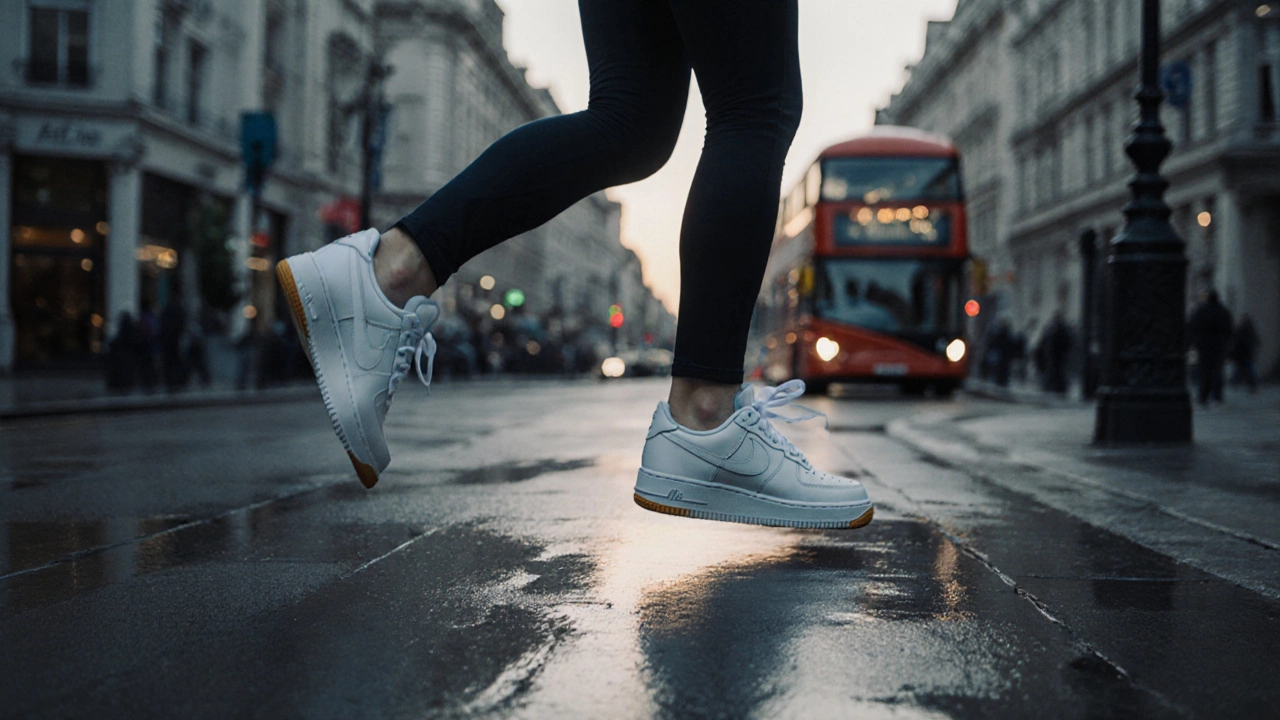
How to Choose the Right Shoe for Your Running Goals
If you’re serious about improving your mileage or speed, consider these decision factors:
- Run type: Road, trail, track or treadmill each demand a specific outsole pattern.
- Foot strike: Heel‑strikers benefit from higher cushioning; forefoot strikers often prefer a lower drop.
- Pronunciation: Overpronators need stability features, while neutral runners can opt for lighter, more flexible shoes.
- Budget: Premium models like Adidas UltraBoost offer superior energy return but cost more; budget-friendly options like Saucony Kinvara still deliver decent performance.
Test shoes at a specialty store, run a quick 400‑m loop, and evaluate comfort before committing.
Bottom Line: Style vs. Function
The Air Force 1 shines as a fashion icon and casual sneaker. When it comes to running performance, the shoe falls short in almost every critical metric. If you value looks over distance, it’s fine for occasional short jogs with the right insole tweaks. For anything beyond that, a dedicated running shoe will keep you faster, safer, and more comfortable.
Frequently Asked Questions
Can I use Air Force 1 for marathon training?
No. The shoe’s heavy weight, high drop, and limited cushioning make it unsuitable for the high mileage and repetitive impact of marathon training. Choose a shoe specifically engineered for long‑run endurance.
What is the main difference between a basketball shoe and a running shoe?
Basketball shoes prioritize ankle support, lateral stability, and durable outsole traction. Running shoes focus on lightweight construction, responsive cushioning, and a heel‑to‑toe drop that promotes a smooth forward roll.
Will adding an orthotic insole make Air Force 1 safe for daily runs?
An orthotic can improve arch support and add a layer of cushioning, but it won’t solve the shoe’s bulk or high drop. It’s a stop‑gap for occasional short runs, not a long‑term solution.
How many miles per week can I safely run in Air Force 1?
If you must run in them, stay under 5km (3mi) per session and limit to one or two sessions a week. Exceeding that raises the risk of heel‑strike injuries.
Which running shoe would you recommend as a direct alternative to Air Force 1?
For a similar high‑top look with true running performance, try the Nike Air Zoom Pegasus 40. It offers a lighter sole, better breathability, and a more appropriate drop while keeping a slightly higher collar for ankle confidence.
